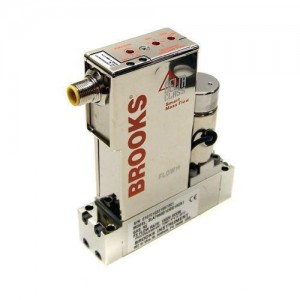 DOA Launch
DOA Launch
When I joined Brooks Instrument, they were just completing a product launch for their new digital mass flow controller (MFC). The product launch received no response. The customer interface was digital and the semiconductor customers had not yet transitioned from analog interfaces to digital. I then had the opportunity to restart the development cycle to correct the short-comings of the DOA product. Some of the things we addressed were the lack of modular design in both the hardware and software. We spec’d out a new, more powerful processor to handle the expected performance bandwidth we needed to handle the new product definition. The main key was a dual interface that could be analog or digital. This provided the customer performance and feature improvement over the traditional analog MFCs while maintaining the legacy interface. But we also had a new technology coming down the pipe that would leverage the full digital design.
Leverage New Technology for Customer Benefit
Brooks had engaged a technology partner to develop multi-calibration capability. At the time, all MFCs were calibrated to a single gas. If you needed a MFC for a different gas you had to buy another one. This created challenges trying to find the best mix of spares in inventory. If the customers could get multiple calibrations on a single MFC they could reduce the number of spares in stock. Prior to releasing the product I wrote an article exposing the lack of accuracy in the traditional calibration technique. We were going to calibrate using a much more accurate method and provide multiple calibration capability. The market received the product well and we were first with a market differentiator. The new product enabled us to penetrate companies that we were not able to penetrate before.
Differentiation That Makes a Difference
An example of this occurred when my lead engineer and I accompanied our sales rep to a semiconductor fab in Texas. Up until this point, we had zero sales with this customer. The reception was cold, if not almost hostile. I don’t know how our sales guy managed to get the meeting, but we were there. We filed into a conference room with a long table. The Brooks contingent sat at one end nearest the projector and screen. The fab manager and two of his engineering managers sat at the other end. It did not take an expert in body language to see that we had our work cut out. I led off the presentation introducing the product, outlining the benefits in general. Then I turned the presentation over to my engineer. As he explained the technology and how it would benefit the fab operations, I noticed that the engineers began leaning forward and then chair-hopping closer, all the while asking questions. By the time my engineer finished, the fab engineers were sitting next to us. I stood and asked if there were any more questions. The fab manager turned to our sales guy and asked “So, how much would it cost to convert the fab?”
Category: Mass Flow Controllers
Where Do You Get Your Ideas?
 In my previous post I talked about motivations for innovation. The example I focused on was Brooks Instrument’s Coriolis MFC (mass flow controller). So how did we come up with this idea and why did we think it would work?
In my previous post I talked about motivations for innovation. The example I focused on was Brooks Instrument’s Coriolis MFC (mass flow controller). So how did we come up with this idea and why did we think it would work?
Where do you get ideas?
I am convinced that there is no magic formula that works in every case. There are a variety of good approaches for getting ideas that won’t work sometimes. The key is to stay flexible and if the results are unsatisfying try a different approach. In Brook’s case we used a “seeded” brainstorming method. I call it “seeded” in that we stablished a context and knowledge baseline before we launched into the brainstorming to expand and then filter ideas to the mostly likely to succeed.
I invited technologists from our sister divisions and subsidiaries to the seminar and included some consultants that had already been screened by Emerson corporate. Several presented technologies that were known and some potential from external ideas. I presented my idea that I had originally pitched to Unit Instruments. Obviously, most of us came with a predisposition toward a particular idea. To keep the effects of prejudice to a minimum, we exposed the prejudices and requested that the participants keep open minds. Here is where we conducted the brainstorming collecting as many ideas as we could. We then discussed product feasibility, time to market, expected development costs, risk factors, among other topics to drill down to a final candidate.
One of our sister subsidiaries was Micro Motion whose founder had invented the Coriolis flow sensor. Coriolis sensors respond directly to mass flow. There are no conversions or inferences required to obtain a measurement of mass flow as with other mass flow sensing technologies. There was considerable IP protection and the technology could obsolete the multi-calibration capability that we had just developed. This would not cannibalize our current product line initially since our initial application would be for liquid flow. Our main products were for gas and vapor flow. The liquid flow products throughout the industry were known to be weak in meeting customer needs. A Coriolis based MFC for liquid applications would expand our product offerings and allow for a reasonable return on investment from the Digital Thermal MFCs. Eventually, the Coriolis MFCs would expand to include gas and vapor applications displacing the digital thermal MFCs. Ok, so we had a technical direction to head in, but what was the product going to be like?
Is the New Product You Just Launched Obsolete?
New product development is about competition; trying to provide a superior product that will attract more sales and satisfy the customer’s needs. Too often, product development is reactive. A competitor comes out with something new that forces you to either meet or exceed their offering. We can see this in the smart phone and tablet markets recently. But this has been going on in the automotive industry for some time. It’s getting more and more difficult to distinguish between different car makes in the main stream markets.
The Mass Flow Controller (MFC) market has the same issues. Having worked with three different MFC companies, I have seen the intensity of competition first hand and the tendency to be reactive. Part of the reason for this is the narrowness of the field. When I was at Unit Instruments, the then CEO illustrated our situation using a picture of a foot race. There were six runners all bunched together at the front. He indicated that although we were the leader, we had three competitors breathing down our necks and two more not far behind. It’s not a comfortable situation. It would be far better if we could separate from the pack. It is far better to be proactive, leading the way to better products.
Such was the case at Brooks Instrument with their new Coriolis mass flow controller (CMFC) product line. At the time Brooks was owned by Emerson Electric. Brooks was part of the pack mentioned above, but toward the back so they were in a better position to take some risk. Emerson owned several other divisions and subsidiaries that were involved in process instrumentation. One of the major events every year was that each business unit would make the pilgrimage to St. Louis where Emerson’s headquarters and corporate retreat were located. The purpose was to review with the CEO and the senior staff the previous year’s results and plans forward. The event was held at the corporate retreat (which has since been divested). As a part of the day-long presentation and discussions, our VP of Engineering presented our new product activities. We had successfully launched our digital MFC with multi-calibration capability. We were disrupting the market. At the end of the presentation the CEO asked our VP of Engineering how old the technology was that our mass flow sensor was based on. Brooks and all their competitors used technology that was developed in the mid-1960s. It is based on the transfer of heat from a heater to a sensor by the flow stream. The mass flow rate is inferred from the heat capacity of the fluid. Our VP explained this to the CEO. The CEO asked, “Is there a chance that one of our competitors would develop a superior flow sensing technology?” Our VP acknowledged that it would be possible. The CEO then asked, “What are you going to do about it?”
Obviously, this would be a strong motivator to launch another NPD project. Our VP of Engineering asked me to put together an internal seminar on flow sensing technologies. I had been keeping abreast of potential technologies that could be incorporated into our products and had an idea for a potential flow sensing technology that I had originally proposed to Unit Instruments. They had initially explored it, but then dropped it when they were acquired. But this would be a focused search for technology that would displace the core MFC sensor.
In later posts I will explore our approach, methods, and challenges in our effort to launch a new product line.

